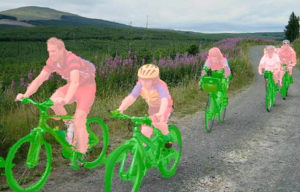Semantic image segmentation

Semantic image segmentation can be applied effectively to any task that involves the segmentation of visual information. Examples include road segmentation for autonomous vehicles, medical image segmentation, scene segmentation for robot perception, and in image editing tools. Whilst currently available systems provide accurate object recognition, they are unable to delineate the boundaries between objects with the same accuracy.
Oxford researchers have developed a novel neural network component for semantic segmentation that enhances the ability to recognise and delineate objects. This invention can be applied to improve any situation requiring the segmentation of visual information.
Semantic image segmentation
Semantic image segmentation plays a crucial role in image understanding, allowing a computer to recognise objects in images. Recognition and delineation of objects is achieved through classification of each pixel in an image. Such processes have a wide range of applications in computer vision, in diverse and growing fields such as vehicle autonomy and medical imaging.
Neural network components
The previous state-of-the-art image segmentation systems used Fully Convolutional Neural Network (FCNN) components, which offer excellent accuracy in recognising objects. Whilst this development represented a significant improvement in semantic segmentation, these networks do not perform well in delineating object boundaries. Conditional Random Fields (CRFs) can be employed in a post-processing step to improve object boundary delineation, however, this is not an optimum solution owing to a lack of integration with the deep network.
Improved beyond recognition
Oxford researchers have developed a neural network component for semantic segmentation that harnesses the exceptional object recognition of FCNNs and the powerful boundary delineation of CRFs. CRFs are fully integrated as recurrent neural networks, resulting in a system that offers enhanced performance compared to the previous state-of-the-art. The novel system can be applied to any task that involves the segmentation of visual information. Examples include road segmentation for autonomous vehicles, medical image segmentation, scene segmentation for robot perception, and in image editing tools. Oxford University Innovation is seeking industrial partners that wish to explore the use of this system for commercial applications.
about this technology

